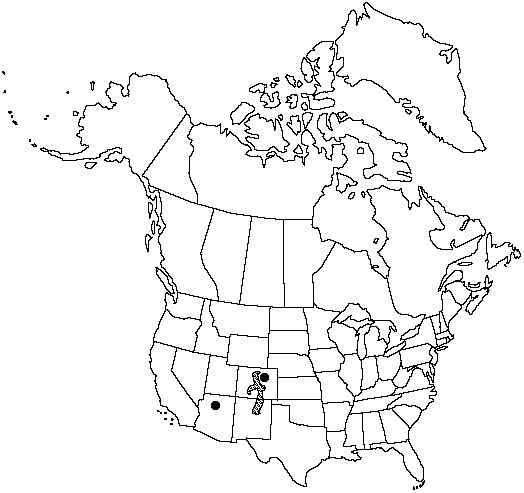Pinus aristata
in Parry & Engelmann, Amer. J. Sci. Arts ser. 2, 34: 331. 1862.
Trees to 15m; trunk to 1m diam., strongly tapering, twisted; crown rounded, flattened (sheared), or irregular. Bark gray to red-brown, shallowly fissured, with long, flat, irregular ridges. Branches contorted; twigs pale red-brown, aging gray, puberulent, young branches resembling long bottlebrushes because of persistent leaves. Buds ovoid-acuminate, pale red-brown, ca. 1cm, resinous. Leaves 5 per fascicle, upcurved, persisting 10–17 years, (2–)3–4cm × 0.8–1mm, mostly connivent, deep blue-green, with drops and scales of resin, abaxial surface with strong, narrow median groove, adaxial surfaces conspicuously whitened by stomates, margins entire or distantly serrulate, apex conic-acute to conic-subulate; sheath 0.5–1.5cm, scales soon recurving, shed early. Pollen cones ellipsoid, ca. 10mm, bluish to red. Seed cones maturing in 2 years, shedding seeds and falling soon thereafter, spreading, symmetric, lance-cylindric before opening, lance-ovoid to ovoid or cylindric when open, 6–11cm, purple to brown, nearly sessile; apophyses much thickened; umbo central, with triangular base, extended into slender, brittle prickle 4–10mm. Seeds obliquely obovoid; body 5–6mm, gray-brown to near black; wing ca. 10–13mm. 2n =24.
Habitat: Subalpine and alpine
Elevation: 2500–3400m
Distribution

Ariz., Colo., N.Mex.
Discussion
Pinus aristata has leaves usually narrower and sharper than in P. longaeva and P. balfouriana, and the leaves almost always have a narrow, median groove on the abaxial surface.
Selected References
None.
